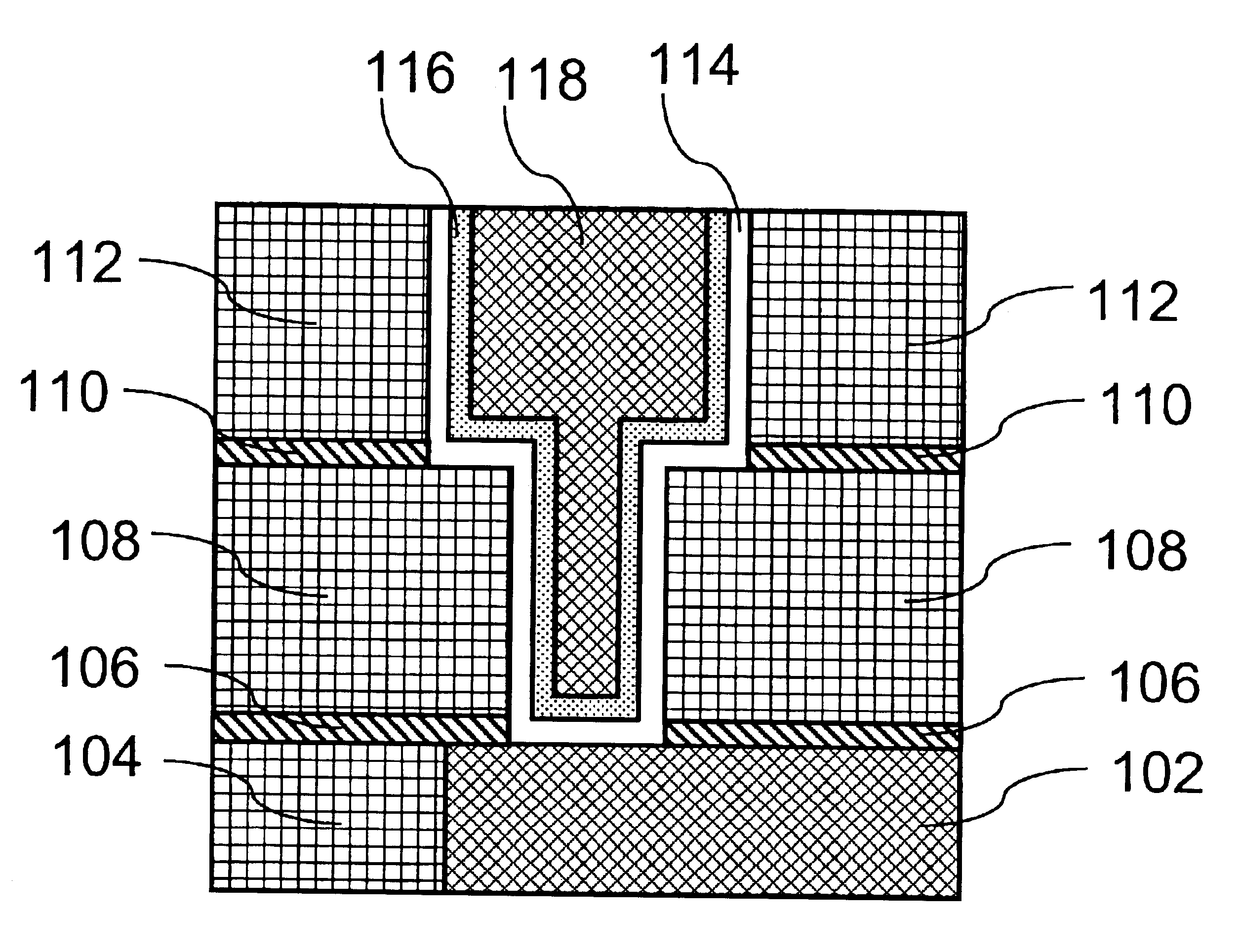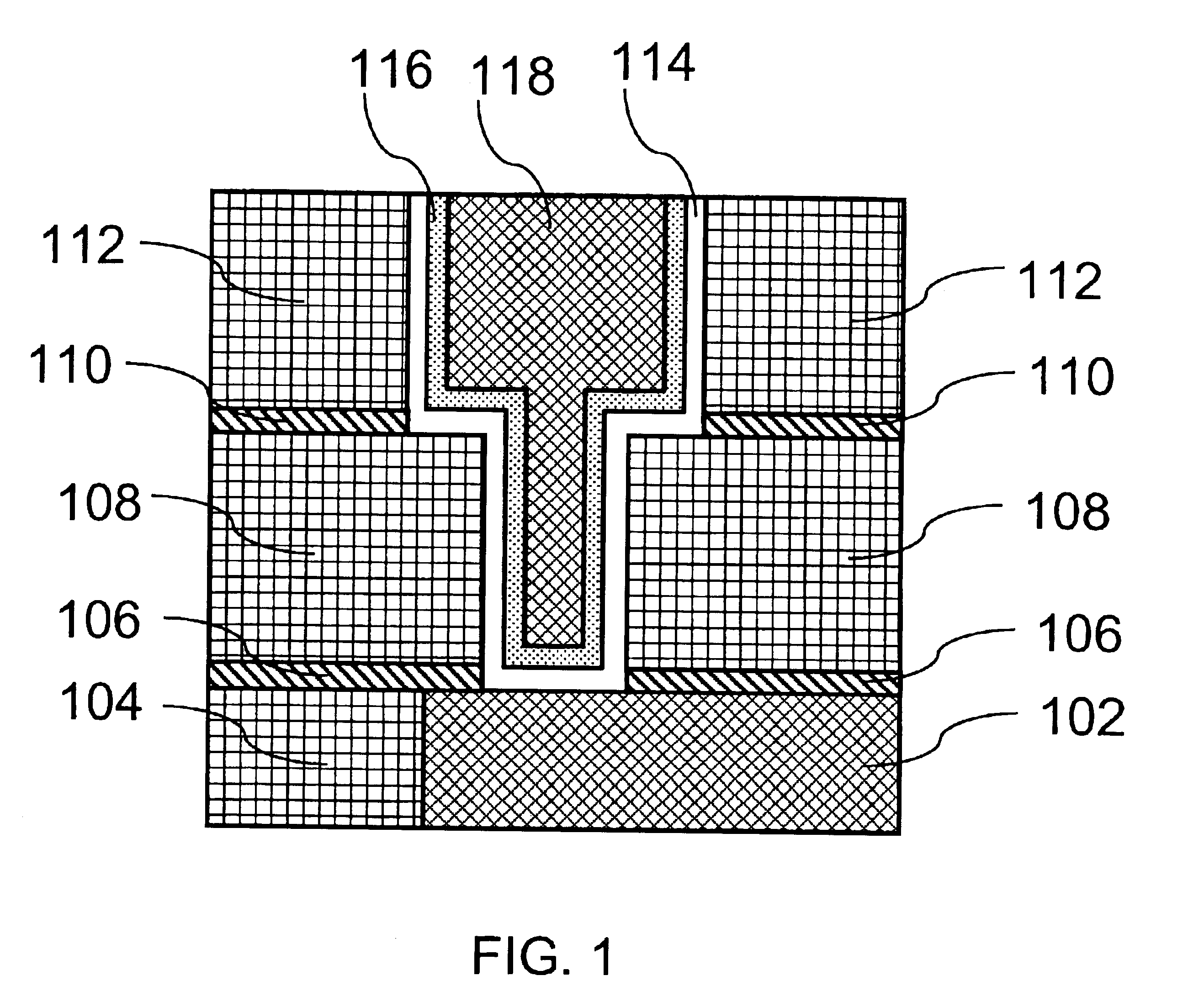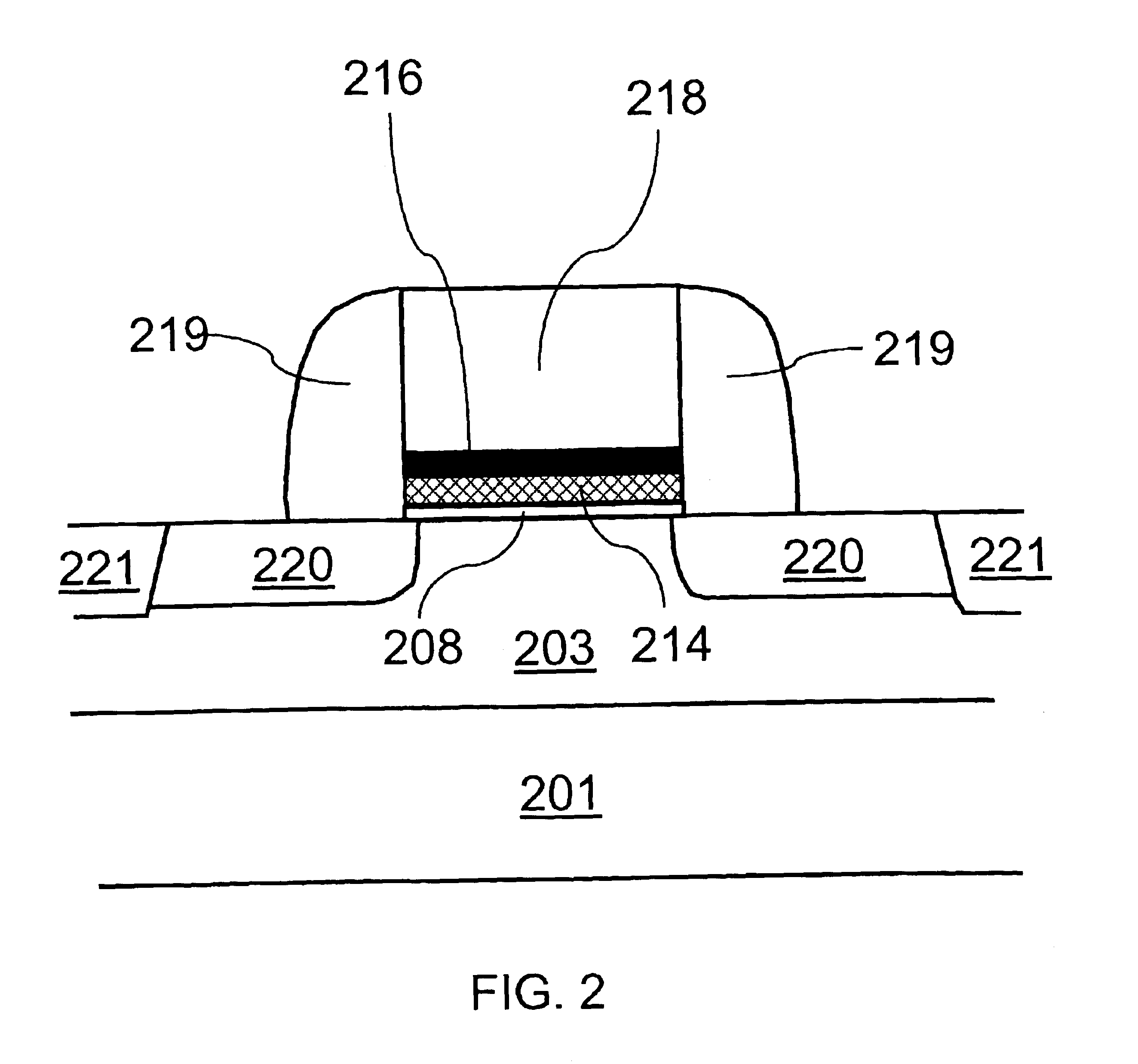Atomic layer deposition methods for forming a multi-layer adhesion-barrier layer for integrated circuits
- Summary
- Abstract
- Description
- Claims
- Application Information
AI Technical Summary
Benefits of technology
Problems solved by technology
Method used
Image
Examples
example 1
[0041]An example of a process for producing a layer that acts as a barrier layer, an adhesion layer and a seed layer in an IC is provided below. The duration (s) and approximate mass flow rate (sccm)of each pulse are given in parentheses.[0042]Step 1:
[0043]Repeat 20 deposition cycles of ALD to produce about 15 Å thick WNxCy barrier layer. One deposition cycle contains precursor pulses and purging pulses and one cycle can be written as:[0044]Introduce a pulse (0.2 s, 30 sccm) of gaseous WF6 carried with Ar (300 sccm) into the reaction chamber provided with the substrate; introduce an Ar purging pulse (1 s, 300 sccm); introduce a pulse (0.5 s, 50 sccm) of NH3 carried with Ar (300 sccm); introduce an Ar purging pulse (1s, 300 sccm); introduce a pulse of triethyl boron (TEB) by passing an Ar flow through a TEB container (1 s, 300 sccm); introduce an Ar purging pulse (1 s, 300 sccm).[0045]Step 2:
[0046]Repeat 10 deposition cycles of PEALD to produce a layer of W about 3 Å thick. One depos...
example 2
[0055]A process for producing a structure according to a preferred embodiment of the present invention can be presented as following:[0056]Step 1:
[0057]Repeat 5 times a sequence of 10 cycles PEALD TaN+10 cycles PEALD Ta to produce a barrier layer of Ta / TaN about 25 Å thick.
[0058]One cycle of PEALD TaN can be written as:[0059]Introduce a pulse of gaseous TaF5 with Ar passing through heated (150° C.) TaF5 container into the reaction chamber provided with a substrate (0.5 s, 300 sccm); introduce an Ar purging pulse (1 s, 300 sccm); introduce a H2 / N2 / Ar plasma pulse over the substrate (2 s, 300 sccm), introduce an Ar purging pulse (1 s, 300 sccm).
[0060]One cycle of Ta can be written as:[0061]Introduce a pulse of gaseous TaF5 (0.5 s); introduce an Ar purging pulse (1 s); introduce a H2 / Ar plasma pulse over the substrate (2 s); introduce an Ar purging pulse (1 s).[0062]Step 2:
[0063]Repeat 10 times a sequence of 1 cycle PEALD Cu+1 cycle PEALD Ta to produce a nanolaminate layer about 5 Å th...
example 3
[0077]First, a barrier layer is formed over the dielectric layer of an IC. 20 deposition cycles of ALD are repeated to form a WNxCy layer, the thickness of which layer is about 15 Å. In one deposition cycle a WF6 pulse with duration of 0.2 seconds is introduced into a reaction chamber provided with the substrate containing the IC, an Ar purging pulse with duration of 1 second is introduced, a NH3 pulse with duration of 0.5 seconds is introduced, an Ar purging pulse with duration of 1 second is introduced, a triethyl boron (TEB) pulse with duration of 1 second is introduced, and an Ar purging pulse with duration of 1 second is introduced. The temperature of the reaction chamber is constant and set to a value selected from a range of about 150° C.-400° C. The pressure of the reactor is below room pressure, preferably selected from a range of about 0.1-10 mbar.
[0078]Second, a layer of metal alloy is formed over the barrier layer either in the same reaction chamber as the diffusion barr...
PUM
 Login to View More
Login to View More Abstract
Description
Claims
Application Information
 Login to View More
Login to View More - R&D
- Intellectual Property
- Life Sciences
- Materials
- Tech Scout
- Unparalleled Data Quality
- Higher Quality Content
- 60% Fewer Hallucinations
Browse by: Latest US Patents, China's latest patents, Technical Efficacy Thesaurus, Application Domain, Technology Topic, Popular Technical Reports.
© 2025 PatSnap. All rights reserved.Legal|Privacy policy|Modern Slavery Act Transparency Statement|Sitemap|About US| Contact US: help@patsnap.com



